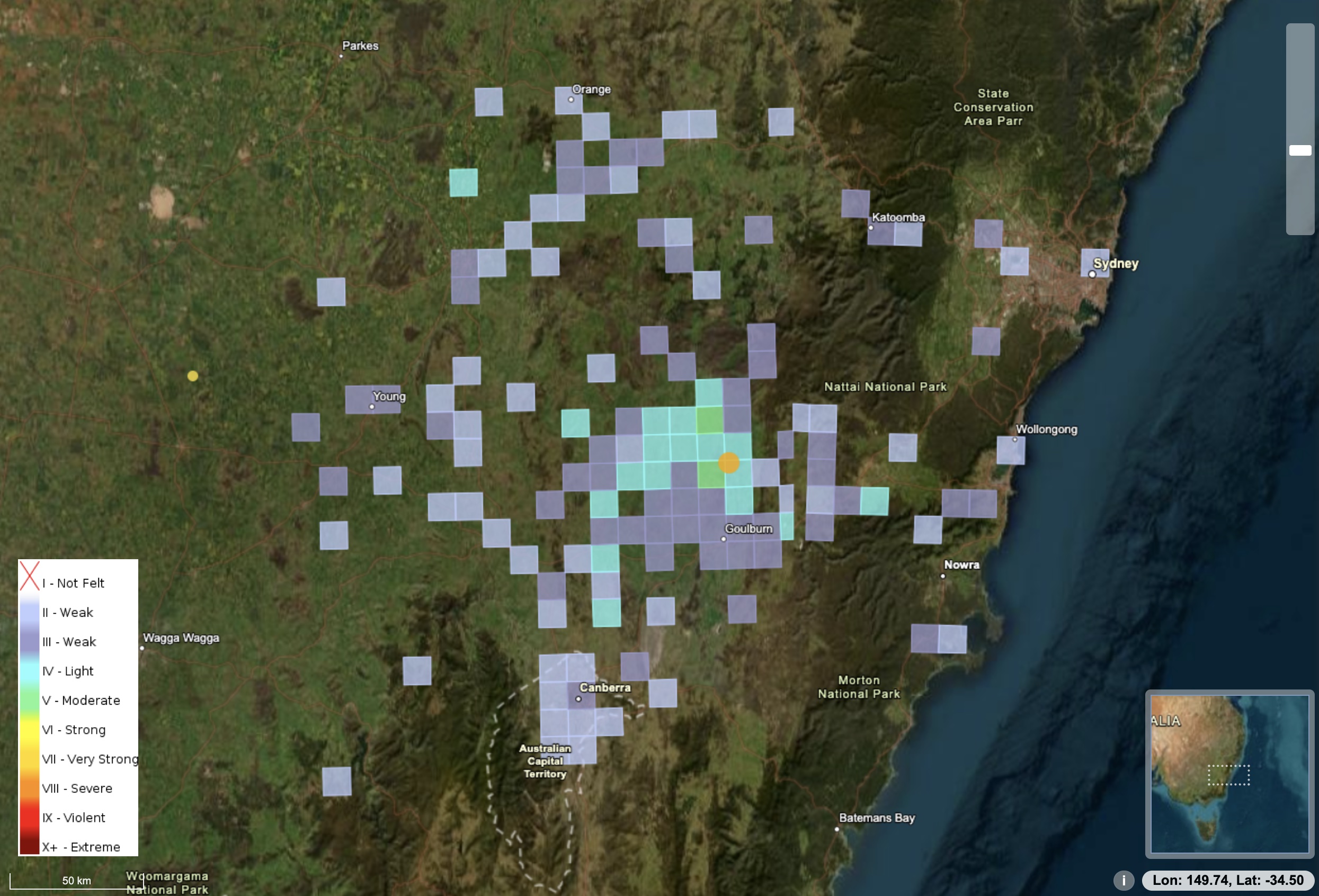How common are earthquakes in Australia?
A magnitude 3.9 earthquake occurred in the NSW Southern Highlands on Thursday morning, causing the ground to shake as far away as Orange and Canberra. So, how common are earthquakes in Australia and how did this one compare to our country's largest recorded earthquakes?
The ‘quake that shook NSW on Thursday morning had an epicentre around 30 km to the north of Goulburn. It was a relatively small and shallow earthquake, with a magnitude of 3.9 and a depth of 10km, according to Geoscience Australia.
Despite only being a relatively small tremor, Geoscience Australia received felt reports from as far away as Orange, Canberra, Sydney and Wollongong.

Image: Felt reports from Thursday’s earthquake. Source: Geoscience Australia
Fortunately, this earthquake was at the weaker end of the scale and as of late on Thursday morning, there were no reports of damage.
What is earthquake magnitude?
An earthquake’s magnitude is a measure of the energy it releases, and it is ranked using a logarithmic scale. According to Geoscience Australia, each unit of magnitude is roughly 30 times more powerful than the preceding level. This means a magnitude 3.0 earthquake releases 30 times more energy than a magnitude 2.0 earthquake, while a magnitude 4.0 earthquake releases 900 times more energy than a magnitude 2.0 earthquake (30 x 30). This makes higher magnitude earthquakes far more damaging than lower magnitude events.
Earthquakes with a magnitude of less than 3.5 are typically too weak to cause damage on the surface in Australia. Once you start getting above a magnitude of 4.0, some slight structural damage and landslips can occur.
The earthquake that took the greatest human toll in Australia was the 1989 Newcastle event. Although it was not a particularly strong quake with a magnitude of 5.4, it still resulted in 13 deaths and 160 injuries.
The 10 largest earthquakes observed in Australia reached magnitudes of 6.0 to 6.6, the largest of which occurred near Tennant Creek, NT in 1988.
Much larger earthquakes have been observed outside Australia. For example, the earthquake that caused the 2011 tsunami in Japan had a magnitude of 9.1, making it one of the largest in the world since 1900.
How often do we have earthquakes in Australia?
Earthquakes in Australia are more common than many people may realise. On average, there are around 100 earthquakes of magnitude 3 or higher every year in Australia. Earthquakes above magnitude 5 only happen about once every one-to-two years, while earthquakes measuring magnitude 6 and above only occur about once per decade.
You can find out more information about recent and historical Australian earthquakes on the Geoscience Australia website.